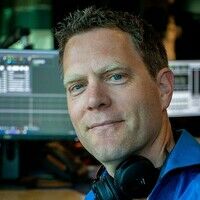Want to bring a cinematic edge to every project you shoot? These webinars and classes, taught by experienced DPs and industry pros, dive into everything from lighting and camera techniques to visual storytelling and post-production, giving you practical skills to make your work stand out.
We wanted to highlight some of our most highly viewed Cinematography webinars and classes so far this year. These programs have helped filmmakers around the world refine their craft, enhance their visual style, and tell more compelling stories through the lens.
TOP WEBINARS:
How To Use 11 Different Camera Angles To Evoke Mood and Emotion >
https://www.stage32.com/education/products/how-to-use-11-different-camer...
Learn how to evoke mood using the proper camera angle from an Emmy-winning producer and director! And get a detailed glossary of 11 shots you need to know and the equipment you need to capture them!
The Keys to a Successful Director & Cinematographer Relationship >
https://www.stage32.com/education/products/the-keys-to-a-successful-dire...
Learn from Emmy Award winning director and cinematographer who has worked with networks including FX, Netflix, PBS, ESPN, Disney, HGTV, TLC, Discovery Channel, Travel Channel, Food Network, and OWN. You’ll walk away with the tools to find the right partnership and cultivate it to create a powerful experience, leading to a fantastic feature film.
How to Get Work in the Camera/ Grip/ Electrical Department on a Film or TV Show >
https://www.stage32.com/education/products/how-to-get-work-in-the-camera...
Learn directly from top key grip from Amazon's THE BOYS and Netflix's LOCKE & KEY & THE UMBRELLA ACADEMY! He will walk you through all the possible jobs within the camera, grip, and electrical fields, what skills you need to be successful, and how COVID-19 has changed the film landscape. He will also discuss the path from the camera department to other roles like cinematographer and director.
TOP CLASSES:
2-Part Class: Advanced Shot Coverage - Implementing Shot Lists and Visual Diversity for Your Film >
https://www.stage32.com/education/products/2-part-shot-coverage-class-ad...
Learn from a top Script Supervisor who's worked on CAPTAIN AMERICA and FURIOUS 7! She will dive into the intricacies and strategies of shot coverage and give you a series of tools and strategies you can use to best shoot and cover your project, no matter how involved it may be.
A Cinematographer's Guide to Making your Indie Film Look Like a Million Dollars >
https://www.stage32.com/education/products/a-cinematographers-guide-to-m...Learn from a Netflix, HBO and Showtime Cinematographer! You'll learn how to elevate the production value of your film, making it stand out in a competitive market.
How to Choose the Best Camera & Equipment for Your Film >
https://www.stage32.com/education/products/how-to-choose-the-best-camera...
Learn from the Director of Photography from Emmy-nominated STRANGER THINGS and SOUND OF FREEDOM (which grossed over $250 Million)! You will learn everything you need to know including how to choose the right camera and lenses, as well as your supporting system, lighting and post-production workflow.
As we map out our 2026 education calendar, your input is essential.
What cinematography topics should we focus on next year? Leave your suggestions in the comments—your feedback shapes our programs.

























Thanks for sharing the video, Michael Fitzer, MFA. I love a scene bathed in red light too! Blue, green, etc. too! I'm gonna write a short script that's all red, blue, or some color. Thanks....
Expand commentThanks for sharing the video, Michael Fitzer, MFA. I love a scene bathed in red light too! Blue, green, etc. too! I'm gonna write a short script that's all red, blue, or some color. Thanks.